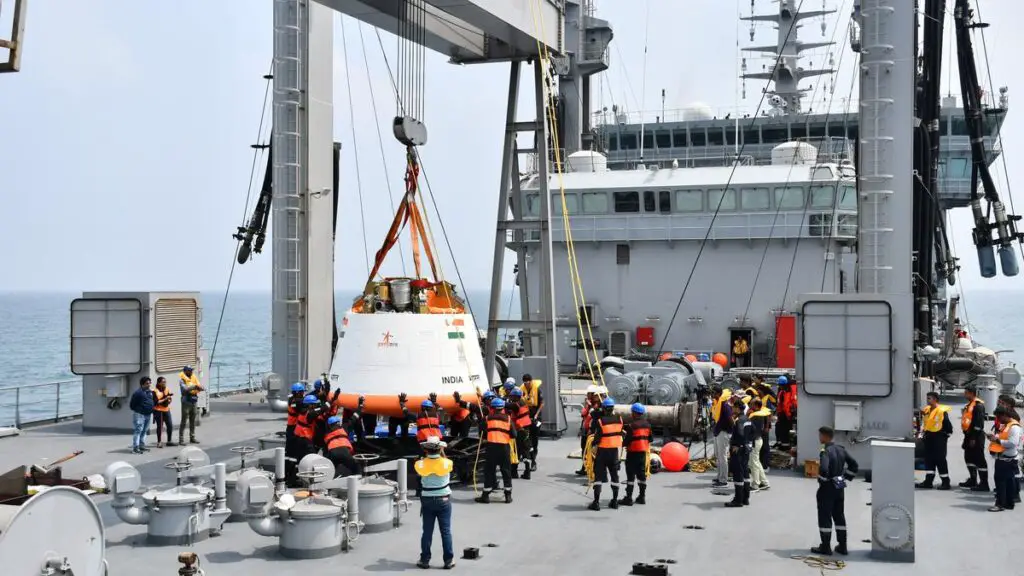ISRO Conducts Successful Test Mission to Bring Crew Module Back to Earth
The Indian Space Research Organisation (ISRO) achieved a significant milestone on October 21 with the successful completion of the Test Vehicle Abort Mission (TV-D1) flight. This test marked ISRO’s first major step towards its ambitious ‘Gaganyaan’ mission, which aims to launch humans into orbit.
During the TV-D1 test, an uncrewed crew module was launched on a small rocket and subjected to a simulated emergency abort command. The module was then safely brought back to Earth, demonstrating ISRO’s capabilities in crew module recovery.
However, the test was not without its challenges. Just five seconds before lift-off, ISRO encountered a glitch when the ground computer, known as the Automatic Launch Sequence, halted the lift-off. The anomaly was quickly detected and rectified, with the launch rescheduled for 10 am after refilling the necessary gases.
To understand the significance of the TV-D1 mission, it is essential to look back at its two important forerunners. The first was ISRO’s Space Capsule Recovery Experiment (SRE-1), which took place on January 22, 2007. In this experiment, an orbiting satellite called SRE was successfully retrieved after being placed in orbit by the Polar Satellite Launch Vehicle (PSLV) on January 10. It demonstrated ISRO’s mastery of re-entry technology and marked India’s first big step towards sending an Indian astronaut into space.
The SRE-1 mission involved sophisticated descent maneuvers, including braking systems, deceleration techniques, and parachute deployment. The satellite was brought back to Earth and recovered by the Coast Guard in the Bay of Bengal, 140 km from Sriharikota. This successful mission was a testament to India’s progress in the field of science and technology.
The second forerunner to the TV-D1 mission was the Crew Module Atmospheric Re-entry Experiment (CARE) carried out on December 18, 2014. In this test, the Launch Vehicle Mark 3 (LVM-3) placed a 3.75-tonne uncrewed crew module in a sub-orbital altitude of 126 km. The module executed a re-entry through the Earth’s atmosphere and landed in the Bay of Bengal, approximately 700 km from Port Blair. This marked India’s second step towards sending astronauts into space and safely returning them.
It is worth noting that the uncrewed crew module used in the CARE test weighed nearly seven times as much as the SRE, weighing in at a full four tonnes. The TV-D1 mission continued this trend, with the module weighing an additional 200 kg.
Apart from the successful recovery of the crew module, the TV-D1 mission featured three other notable highlights. Firstly, it witnessed the inaugural launch of a standalone liquid booster rocket from Indian soil, showcasing ISRO’s advancements in rocket technology. Secondly, the Crew Escape System performed flawlessly, effectively separating the crew module from the launch vehicle. Lastly, the crew module demonstrated remarkable reorientation capabilities before landing in the Bay.
ISRO’s TV-D1 mission is a significant step forward in India’s space exploration efforts. With the successful recovery of the crew module and the achievements of its forerunner missions, ISRO is making impressive strides towards fulfilling its vision of launching humans into orbit through the ‘Gaganyaan’ mission. The advancements in re-entry technology, rocket systems, and crew module operations demonstrate India’s growing expertise and commitment to space exploration.

